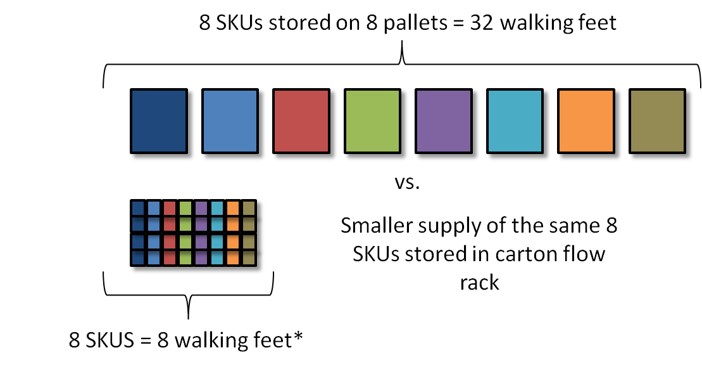
By Ian Hobkirk
Managing Director of Commonwealth Supply Chain Advisors
Under increasing pressure to work faster, better, and smarter in today’s omni-channel and e-commerce business environment, companies need help getting their distribution operations up to speed with customer demands and expectations. To help, I’ve identified 10 key tactics that successful companies are employing in order to make a graceful transition to higher levels of e-commerce in the distribution center.
In this ten-part blog series, I’ll cover four basic, three intermediate and three advanced tactics that will help your firm achieve e-commerce distribution success.
Basic Tactics
1. Create a Forward Pick Area
2. Setup Effective Replenishment
3. Determine Overall Pick Strategy
4. Determine the Optimal Pick Methodology
Intermediate Tactics
5. Practice Real-Time Warehousing
6. Optimize Packing
7. Manage Parcel Shipments Effectively
Advanced Tactics
8. Pick to Shipping Container
9. Employ Goods-to-Picker Systems
10. Improve Wave Management
This blog, Part I will focus on the first of the four Basic Tactics, Create a Forward Pick Area.
Tactic #1: Create a Forward Pick Area, a Basic Tactic
A forward pick area is a zone in the warehouse that contains a small amount of a large number of SKUs. The goal of creating this area is to increase SKU-density per linear-foot, and allow multiple picks to be performed with a minimal amount of travel. The figure below illustrates the extent to which walking can be reduced by implementing this strategy.
Without a forward pick area, where unit picking is done from broken cases stored in pallet rack, a picker would need to travel 32 feet to be able to pick 8 SKUs. Because such a large amount of each SKU is stored in the pick zone (an entire pallet of each SKU), the picker must walk past large reserve supplies of product to pick a relatively small amount of goods.
In a forward pick area, a small supply (one month’s usage for instance) of each SKU is selected for the pick zone. Rather than being stored in pallet rack, these SKUs are stored in more suitable mediums such as carton flow rack or static shelving. In carton flow rack, for instance, approximately four (4) cartons of each SKU can be stored in a single lane of carton flow (assuming a twelve-inch square carton and 48” deep carton-flow). If the carton-flow is configured eight lanes wide by four lanes tall, then approximately 32 SKUs can be stored in eight lineal feet of aisle. This is a sixteen-fold increase in SKU density. Rather than walking thirty-two feet, the same 8 SKUs can be picked by walking eight feet.
Tips for Setting up A Forward Pick Area
- Don’t try to put every SKU here: Select the SKUs which are most frequently used for e-commerce. Very slow movers and very fast movers might not belong here.
- Use the right storage medium: Determine the optimal supply of goods to keep in this zone based on days of usage. Then determine how many cubic inches of space will be occupied by this target supply of each SKU. Once this factor is known, then appropriate storage mediums can be chosen. Items with low cubic velocity can be stored in static shelving. Medium cubic-density items can be stored in carton flow rack. Larger density items can be stored in decked pallet rack, full pallets, or even pallet-flow rack.
- Reconfigure your WMS: Your company’s Warehouse Management Software (WMS) system will need to be configured to allow for multiple zones in the warehouse, and to direct certain types of picking to certain zones. The same SKU will likely exist in the forward pick area in a small quantity, as well as in a reserve location where a larger supply is held. If full cases of product are required for an order, the WMS will likely need to direct the picker to the reserve location rather than depleting a significant amount of product from the forward pick area. Most modern WMS systems can accommodate this, but certain legacy systems may struggle with the concept of the same SKU residing in multiple bins. Work-arounds in the WMS may need to be created to allow this bin system. Related content, Whitepaper: “Selecting the Right WMS.”
- Re-profile frequently: As e-commerce ramps up, the target days-on-hand for the forward pick area may need to be adjusted, and certain SKUs may need to be shifted to other storage mediums based on changing velocity. Failure to re-profile will cause efficiency gains to be eroded.
In the next segment of this ten-part series we’ll look at Basic Tactic #2, Set Up Effective Replenishment.

